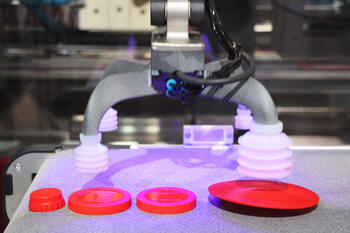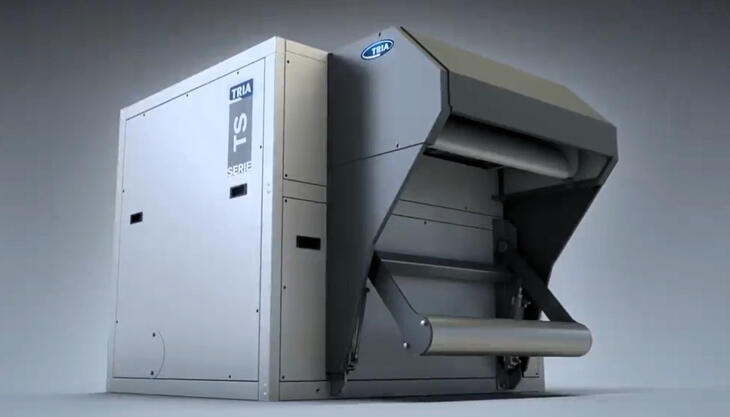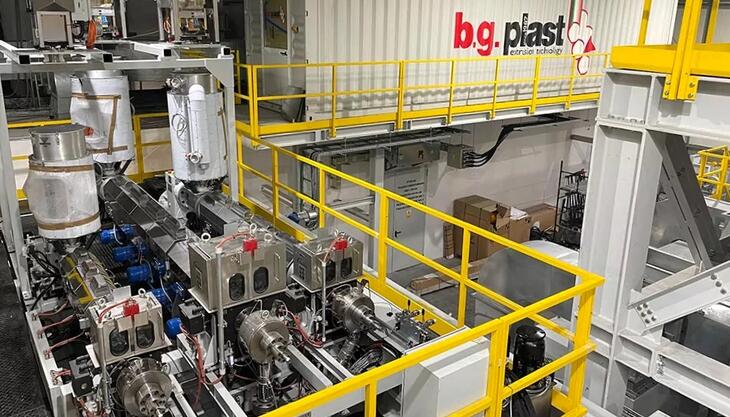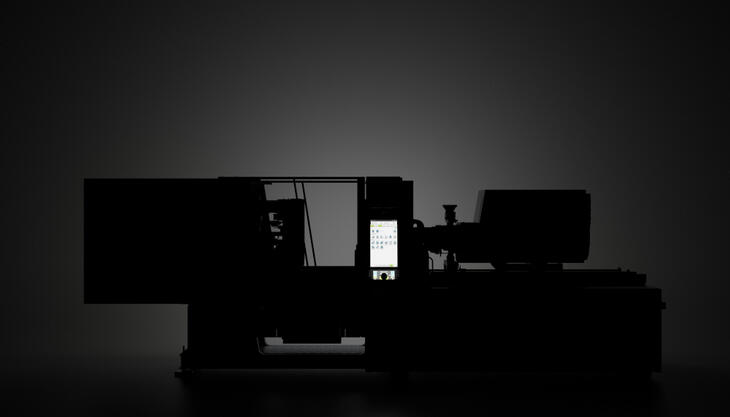Wittmann at Plast 2023 with injection moulding, automation, and digitization

Injection moulding
With the production of a re-usable 3-component coffee-to-go cup with lid on a SmartPower 400/750H/210S/525L Combimould, visitors will be given an insight into the company’s expertise in multi-component technology, as well as Cellmould light-weight technology. The machine is equipped with a rotary unit and a mold supplied by Haidlmair, Austria. The material to be used for manufacturing both the cup and the lid is Bornewables from Borealis. Bornewables consists entirely of renewable materials (i.e., non-petroleum-based feedstock) and is both food safe and dishwasher safe. The feedstock for making Borealis Bornewables originates from biomass, waste, and residual substances of the second generation, which are not in competition with the human food chain. The mold from Haidlmair is laid out optimally for processing Bornewables material. A special feature of this mold is the use of hybrid elements in the mold plate to optimize cooling. The cup produced in clear optic in the first cavity is over-molded in the second cavity with a shell and provided with an additional insulating effect by foaming the melt with Cellmould technology. The lid for the cup is injection-molded in an adjacent cavity. It consists of the same material as the main body but can be individually colored thanks to the special mold technology. The parts are removed and deposited on a conveyor belt by a WX142 robot, then passed on to a flow wrapping machine and packaged. The packaging material used in this instance also comes from the Bornewables product family from Borealis.

Wittmann Battenfeld will demonstrate its expertise in digitization and automation at the Plast in Milan by manufacturing a spirit level on a SmartPrimus 90/350 with the new B8X control system. The machine comes with the CMS Lite condition monitoring system from Wittmann and a special automation cell designed and constructed by Wittmann Battenfeld Germany. With a 1+1-cavity mold supplied by Sola, Austria, the spirit level will be produced from ABS. As a first production step, the top and bottom parts of the spirit level housing are injection molded. The top part is then deposited and printed at a laser station. Simultaneously, the bottom part placed on a tray is fitted with vials from SOLA. Next, the top part is pressed onto the bottom part by a pre-set force. The finished parts are then transported to a testing station, where the positioning of the vials is checked by a vision system. After quality inspection, the finished spirit levels are removed and deposited on a conveyor belt by a WX138 robot from Wittmann.
A further machine on display will be an all-electric EcoPower 110/350 LIM with the new B8X control system used to demonstrate Wittmann Battenfeld’s expertise in liquid silicone processing. With this machine, four different closing caps for beverage cans and bottles will be produced from liquid silicone in a single injection-molding process, using a 4-cavity mold from Nexus, Austria. The open design of the EcoPower’s injection unit enables easy integration of the LSR metering unit. The Nexus X200 metering unit comes with a new Servomix dosing system and is connected with the machine’s B8X control system via Euromap 82.3 OPC-UA integration. In the mold, latest cold-runner technology with Flowset needle shut-off regulation is used. The parts are removed by a Wittmann W918 robot and packaged by a flow wrapping machine.

Automation and auxiliaries
In addition to the robots and auxiliary appliances connected to the machines on display, numerous robots, and auxiliaries from Wittmann will also be shown as stand-alone solutions at the Plast in Milan. From its range of automation equipment, Wittmann Battenfeld Italia will show a WP80 sprue picker, a W918 robot with R9 control system, a model from the low-cost PRIMUS series, a Primus 48T, and a Sonic 108 high-speed robot. The Sonic 108 is the latest high-speed parts removal appliance from Wittmann, developed for clamping forces ranging from 500 to 1,500 kN. The typical cycle time of this robot model is below 4 seconds for gripper weights of up to two kg.
Wittmann Battenfeld Italia will also present an extensive portfolio of Wittmann auxiliaries to Plast visitors. Some of these exhibits will be a Wittmann central material conveyor system, plus a Feedmax S3 standalone loader, a Dosimax MX12 volumetric blender and a Gravimax 14 gravimetric blender. From its range of dryers, Wittmann Battenfeld Italia will showcase Drymax plus 30 dry air dryers and drying batteries consisting of Drymax and Silmax batteries, as well as a Codemax coupling station. The program will be rounded off by an Aton plus segmented wheel dryer and a Card primus compressed air dryer with a VacuJet conveyor for material throughputs of up to 120 kg per hour.

Exhibits from the Wittmann Group’s granulator range will be one S-Max 1 and one S-Max 2 screenless granulator, and a G-Max 9 granulator. G-Max granulators are energy-efficient and come with a small footprint as well as a sound-insulated cutting chamber. The S-Max granulators feature toothed rollers with low motor speeds (27 rev/min at 50 Hz) for efficient, low-cost granulating of engineering plastics as well as styrene, acrylic and fiberglass-reinforced materials.
Digitization
At the Plast, Wittmann Digital will introduce its Temi+ Academy and its Imagoxt peak control system. The Temi+ Academy is a new service to enable managers and operators to fully exploit the potential of the Temi+ MES system with the help of an extensive training program. Another novelty to be presented by Wittmann Digital at the fair is the Imago peak control system, a "lite" version of the Imago system destined to help companies avoid energy consumption peaks. With its intuitive user interface and real-time dashboards, the Imago peak control system enables companies to achieve seamless, efficient optimization of their energy consumption. By identifying potential peak times and providing real-time warning signals, it becomes possible to make well-founded decisions about the energy consumption, and about shifting various loads by appropriate demand management strategies.



















